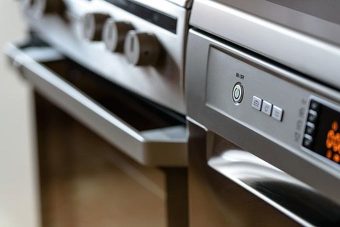
A group of health and green building experts have joined together in a new working party aimed at integrating energy efficiency policies with measures to tackle indoor air pollution caused by kitchen products, faulty boilers, open fires, and other household appliances.
Launched today, the working party hopes to help reduce public exposure to indoor air pollution by developing research, policy recommendations, and innovative solutions for tackling dirty air in the home.
Members of the group include experts from the Building Research Establishment (BRE), the Royal College of Physicians (RCP), the Royal College of Paediatrics and Child Health (RCPCH) and the Adaptation and Resilience in the Context of Change (ARCC) network.
The initiative is aimed at expanding public awareness of outdoor air pollution to also include the “more immediate” health threat of poor air quality inside buildings, the group’s members said.
It comes as the government readies its much-anticipated draft plan for improving outdoor air pollution across the UK, which is expected to emerge within the next fortnight.
Professor Stephen Holgate, the RCP’s special advisor on air pollution, said while people tended to focus on air travel, busy roads or factories as sources of air pollution, one of the more immediate threats to human health was provided by indoor air pollution.
“Factors such as kitchen products, faulty boilers, open fires, fly sprays and air fresheners, can cause poor air quality in our homes, workspaces and schools,” he said. “We need to take action now and protect our future generations.”
BRE’s CEO Peter Bonfield, who has also joined the working party, said people in the UK spent up to 80 per cent of their lives inside their homes, schools and workplaces, highlighting the importance of reducing pollution levels inside buildings.
“Improving indoor air quality represents a huge opportunity to significantly improve our health and wellbeing,” said Bonfield, who has recently led government-sponsored reviews into building energy efficiency and mitigating flood risk. “Consumers need to be aware of the direct benefits of energy efficiency and how to best implement energy efficiency measures in their homes including ventilation strategies, achieving adequate indoor air quality through increased insulation levels.”
Roger Street, principle investigator from the ARCC network, said engineering and research on improving indoor air quality was increasingly going hand-in-hand with solutions to reduce carbon emissions.
“There is already a willingness to act from the built environment community in making use of research findings to improve indoor air quality,” said Street. “This is particularly true for existing public research investment into understanding the linkages between decarbonisation, health and housing. An exciting area of emerging research to assist with ventilation design for new and retrofitting applications over the building’s lifetime is the development in air flow modelling between external and internal environments that account for climate change.”
Source: businessgreen.com
